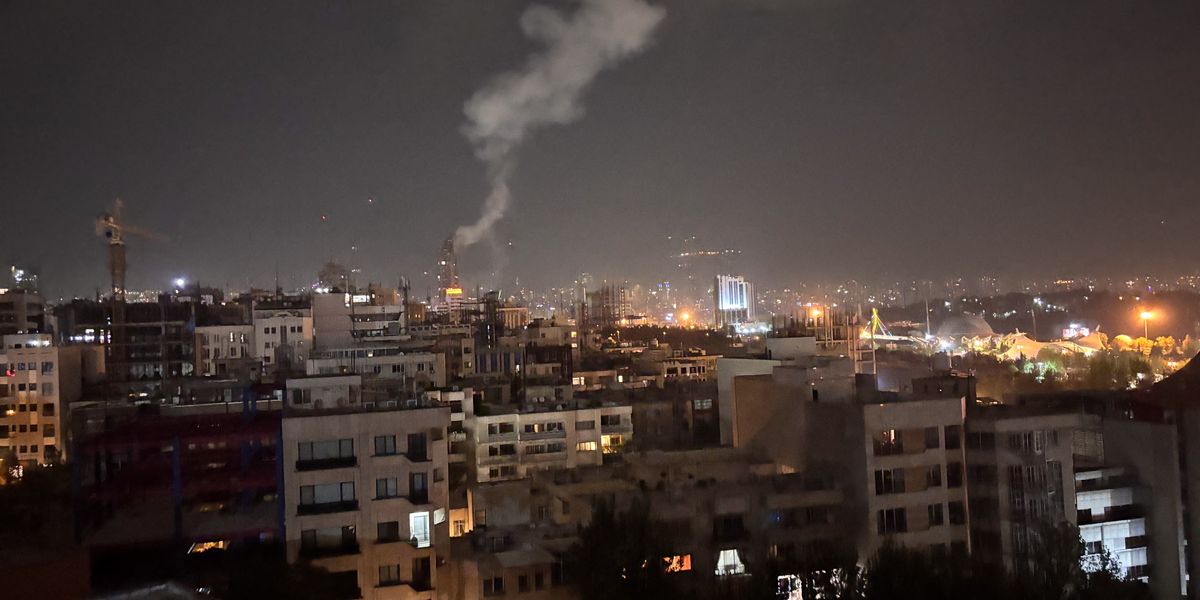The reports show men in prison jumpsuits confessing that they were recruited as Israeli spies, along with weapons they were supposedly planning to use. Analysts say the confessions are probably coerced, and an analysis of the images by the FRANCE 24 Observers team found no evidence of any Israeli-made weapons among the supposed seizures.
For its part, Iran is attempting to present itself as successfully arresting Israeli operatives and confiscating their weapons. The so-called "seized weapons” and arrested “Mossad agents” appear to be staged, as there is no credible evidence to substantiate these claims.
The 12-day war between Iran and Israel was, among other things, a devastating blow to Iranian intelligence. The Israeli military had precise intelligence on high-ranking generals, allowing them to successfully target and killing of at least 29 of them. And Israel’s intelligence agency, the Mossad, apparently succeeded in recruiting large numbers of Iranians to serve as agents on the ground in the deployment of guided missiles and FPVs.
In the days after the initial Israeli attack on June 13, the Iranian authorities showed numerous images of abandoned vehicles and equipment left behind after their use in Israel’s attack. They also showed images of spent munitions, including the casings of Israeli-made short-range Spike missiles, along with cars used to transport these missiles and suicide drones deep into Iran, as well as Israeli makeshift drone factories within the country – all of which reveals that Israeli intelligence had successfully recruited and infiltrated Iran on a large scale.
The Iranian intelligence services have not, however, shown any conclusive evidence to date of weapons they seized intact, before their deployment by supposed agents inside Iran.
The regime in Tehran claims to have arrested 700 Israeli operatives in 12 days, many of whom could potentially face execution. The arrested suspects are accused of planning to use attack drones, building bombs, spying on military sites, and transmitting information to Israel, according to Iranian media.
State media also reported that at least six men accused of spying for Israel in the past had been executed since the Israeli attack on June 13. On June 25, Iran executed three Kurdish men—Edris Ali, Azad Shojaei, and Rasoul Ahmad Mohammad—who had been sentenced to death in 2023 on charges of smuggling assassination tools into the country for Israel. Iran’s judiciary reported that three other men – Madjid Mossayebi, Esmaeil Fekri, and Mohammad Amin Shayesteh – had also been executed since June 13.
Seized weapons: what Iran claims vs. what the evidence shows
State-affiliated media in Iran have published reports interviewing purported Israeli agents and showcasing 'seized' weapons.
However, in two instances where state media have presented images of these confiscated weapons, the photographs appear to be either fake or staged.
The first case occurred on June 24, 2025, when the Iranian ministry of intelligence claimed to have seized 402 drones in two cities in southern Iran’s Hormozgan province. State media reporting on the seizure broadcast a photograph showing five attack drones with blue batteries. However, the photo is unrelated to Iran. It was taken in Ukraine in May by an Associated Press photographer, and shows attack drones made by the Ukrainian army for use against their Russian enemies.

A TV report on the supposed Hormozgan seizure by state broadcaster IRIB used different images. The report showed stacks of commercially available consumer drones in their original packaging, including models that are too small to carry munitions.
To display this content from Telegram, you must enable advertisement tracking and audience measurement.
In a second report, on June 24, state media broadcast images of six men in prison uniforms with their backs to the camera being questioned by a security officer. The men say they had been contacted by Mossad via social media and began cooperating with them.
To display this content from Telegram, you must enable advertisement tracking and audience measurement.
The report also showed a row of various weapons displayed on a table, supposedly seized from the alleged Israeli agents. But nearly all the displayed weapons are manufactured in Iran.
The video showed an Iranian-made man-portable air-defence system, the 'Misagh-3'. It also showed an Iranian-made drone, the 'Shahin-1,' recently added to the Iranian military’s arsenal. The video also showed two mortar shells, one of which is made in China, and the other in the former Yugoslavia — both of which are commonly found in Iran’s military stock.
The presence of Iranian-made weapons, coupled with the absence of any Israeli or Western-made arms, raises further suspicion that the arrest and seizure may have been staged.

Afghan immigrants new enemies of the state
Since the onset of the 12-day war, rumours and reports circulating on social media have suggested that Afghan nationals are cooperating with Israel as foot soldiers.
To display this content from Telegram, you must enable advertisement tracking and audience measurement.
These reports allege that some Afghan immigrants in Iran are engaged in spying, planting bombs, and piloting drones on behalf of the Israeli Mossad. State television has also aired reports of arrested Afghan citizens "confessing" to being Israeli assets, transferring sensitive information, and planning to plant bombs at the direction of their Israeli handlers.
To display this content from Telegram, you must enable advertisement tracking and audience measurement.
According to Iranian media, at least five Afghan nationals have been arrested since the start of the 12-day war. Estimates suggest that between 5 to 8 million Afghan immigrants live in Iran, the majority of whom are considered "illegal" immigrants.
In this context, on June 27, Iranian media announced that police had been ordered to deport all illegal Afghan immigrants. The media also reported that renting property to these immigrants would result in the confiscation of the property.
While anti-Afghan sentiment in Iran has long been prevalent — especially since the most recent wave of immigration beginning in 2021 — this sentiment has surged dramatically since the 12-day war. Historically, Afghan immigrants in Iran have been targets of attacks over crimes such as theft, rape, and drug-related offenses. However, this marks the first time they have faced accusations of espionage and collaboration with Israel.










 English (US) ·
English (US) ·